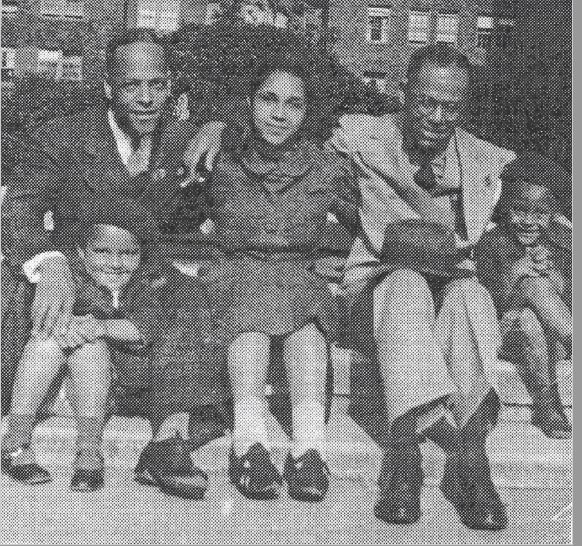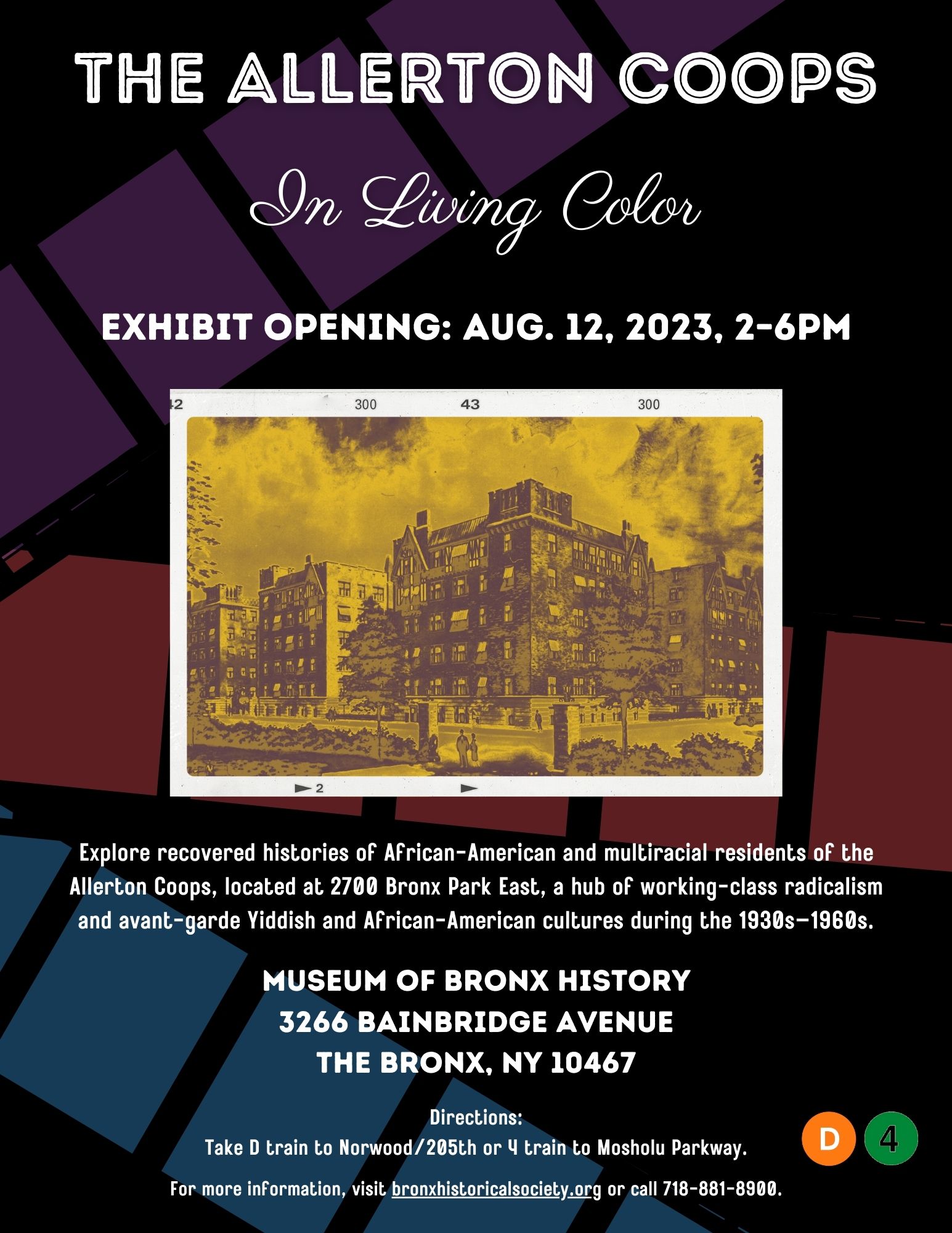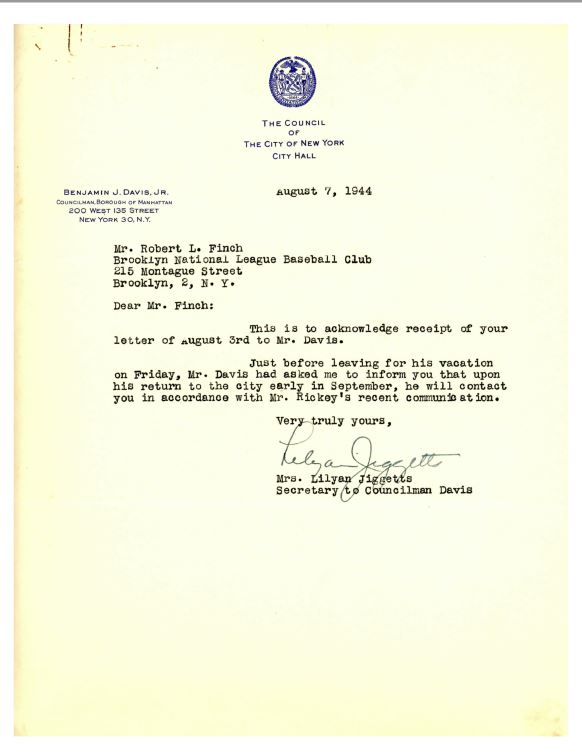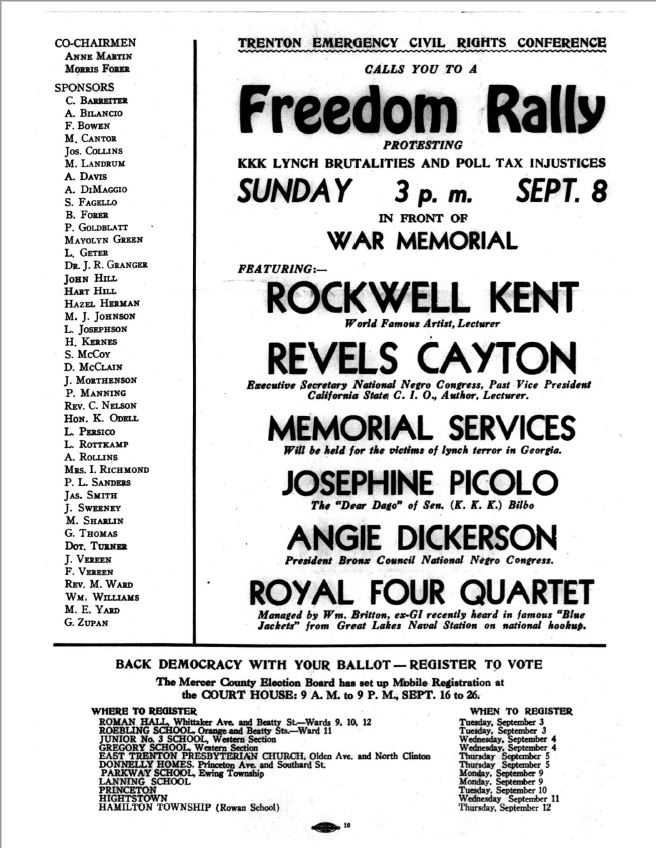
Photo courtesy of The Bronx County Historical Society
In celebration of “Black August,” and as the first offering of a multi-year, research project at The Bronx County Historical Society, the Museum of Bronx History in Norwood, opened “The Allerton Coops, In Living Color” exhibit on Saturday, Aug. 12. According to representatives of the museum, the exhibit recovers the histories of African American and multiracial residents of the Allerton Coops, located at 2700 Bronx Park East, one of the earliest interracial housing complexes in The Bronx.
Black August is an annual commemoration and prison-based holiday to remember Black political prisoners, Black freedom struggles in the United States and beyond, and to highlight Black resistance against racial, colonial and imperialist oppression.
They said the Allerton Coops (“the Coops”) were self-funded and constructed in the late 1920s by the United Workers’ Association, a cooperative organization consisting primarily of working-class Jews in the garment industry. They said the Coops, along with other housing cooperatives built in The Bronx at the time, gave working-class people democratic control over their housing, with no landlord, and included various amenities like a library, daycare, auditorium, classrooms, club space, and more.

Image courtesy of The Bronx County Historical Society
Museum officials explained that due to financial difficulties, the Coops became privately-owned rental apartments in 1943, but residents maintained a large degree of control over the complex for a few decades thanks to a well-organized tenants council.
They said as early as 1930, a small number of African American residents moved into the Coops, with more moving in during the 1940s, well before this was the case in many other parts of The Bronx. Museum officials said that Parkchester, for example, was a whites-only development until the late 1960s. They said during a period in which social and sexual relations between whites and people of color were illegal in many U.S. states and highly regulated in others, the Coops also fostered a significant number of interracial couples and families.
Museum officials said the exhibit asks why, and to what extent, the Coops were unique with respect to racial equality by zooming in on the daily lives and struggles of the complex’s first African American and multiracial residents. Through oral histories, documents, books, photographs, cartoons, never-before-exhibited paintings and sculptures, and other historical memorabilia tied to the Coops, the exhibit dwells on the complexity and contradictions of interracial living in mid-20th century America.
They said, simultaneously, the exhibit recovers a vibrant community of African American and multiracial artists, activists, actors, and other creatives whose daily stories have rarely been told.

Image courtesy of Jackie Robinson papers, The Bronx County Archives at The Bronx County Historical Society Research Library
The exhibit opened on the birthday of Dr. Angie Dickerson (1910–1981), a prolific African-American human rights and peace activist who lived in the Coops for the last four decades of her life. Director of The Bronx County Historical Society and exhibit curator, Dr. Steven Payne said of the exhibit, “I began research on this exhibit during the pandemic. I had seen “At Home in Utopia” (2008), a PBS documentary that tells the early history of the Coops, and I wanted to find out more about the complex’s first residents of color.”
Payne added, “I didn’t expect to locate many people still alive who could speak to this history, much less during a pandemic, but here we are almost two dozen oral histories later, with more left to record. What I’ve learned through the oral histories and collected material documentation of so far, thanks to the help and generosity of current and former residents of the Coops, is incredible. Trailblazing African-American artists Jim and Hartwell Yeargans, actors Canada Lee and Eric Burroughs, activists Queen Mother Audley Moore and Dr. Angie Dickerson, author Ann Petry, and others all lived in the Coops.”
He concluded, “Thankfully, in the 1980s, the Coops were recognized as a national landmark for residents’ contributions to avant-garde Yiddish culture. This exhibit uncovers many additional aspects of the complex’s rich history that are mostly unknown. Like the far more famous 409 Edgecombe in Harlem, the Coops had a staggering roster of exceptionally talented and accomplished African American and multiracial residents. It’s high time we celebrate them and the Bronx histories that they represent.”

Image courtesy of the Dr. Angie Dickerson papers, The Bronx County Archives at The Bronx County Historical Society
“The Allerton Coops, In Living Color” remains on display at the Museum of Bronx History, 3266 Bainbridge Avenue, The Bronx, NY 10467, on Aug. 12 until 6 p.m. and during regular museum hours on Saturdays, from 10 a.m. to 4 p.m. and on Sundays, from 1 p.m. to 5 p.m., and by appointment by emailing education@bronxhistoricalsociety.org. For more information, contact Dr. Steven Payne, director of The Bronx County Historical Society, at spayne@bronxhistoricalsociety.org.




